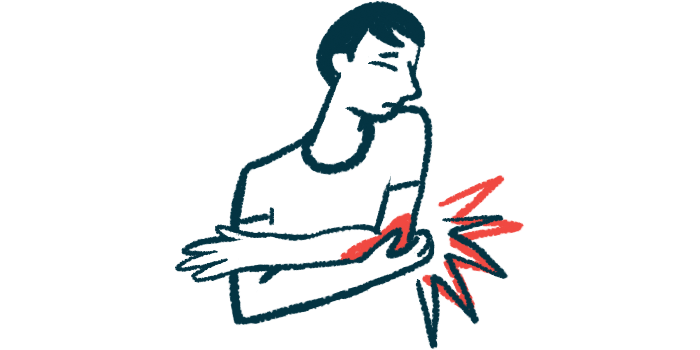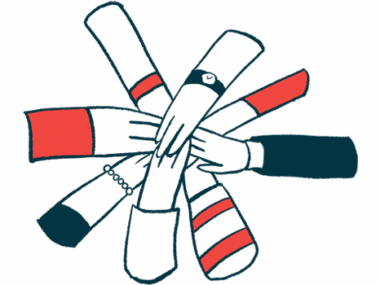Pain With Dominant DEB Can Be Severe, Affecting Life Quality
Written by |

Pain, but not wound size, significantly affects a person’s perception of disease severity with dominant dystrophic epidermolysis bullosa (DEB), a study reports.
Chronic open wounds, difficulty swallowing or walking, and anal narrowing also plays into patients’ perceptions of their disease’s severity.
The study, “Patient-reported outcomes and quality of life in dominant dystrophic epidermolysis bullosa: A global cross-sectional survey,” was published in the journal Pediatric Dermatology.
DEB is one of the major forms of epidermolysis bullosa, characterized by very fragile skin prone to blisters and tearing with the slightest movement, and scarring of healed wounds. It is caused by mutations in the COL7A1 gene, which contains the instructions to produce a part of type VII collagen, key in the adhesion of skin layers.
In dominant DEB, only one copy of the mutated COL7A1 gene needs to be inherited from a parent to cause the disease. A child with recessive DEB, in contrast, needs to inherit two mutated copies (one from each biological parent) to develop the disease.
Dominant DEB typically has a milder presentation than the recessive form, with mostly benign blistering and less common non-skin manifestations. However, both forms often have overlapping symptoms and degrees of severity.
Most research on disease burden has focused on recessive DEB. Here, a team led by scientists at the Stanford University School of Medicine analyzed results of an online survey into disease burden in people with dominant DEB.
The survey, open to patients and their caregivers and running from February 2012 to October 2016, asked respondents to complete a medical profile and the quality of life evaluation in epidermolysis bullosa (QOLEB), a questionnaire that scales disease status and well-being. Higher scores indicate a poorer qualify of life.
It was conducted as part of the EBCare Registry, an online database created by Debra and Lotus Tissue Repair.
Of 439 people with EB, 42 (9.6%) had dominant DEB. Almost a third (12 patients, 28.6%) were under the age of 18 and half (21 patients) had at least one immediate family member with dominant DEB. Most resided in North America (31), followed by Europe (eight patients) and with one in Asia and two in Australia.
In nine patients (21.4%), the diagnosis was made via genetic testing, with 12 others (28.6%) diagnosed by tissue analysis and five by clinical observation.
A total of 23 respondents classified the skin lesions or blisters as mild, followed by 12 who said they were moderate. Four patients reported the skin lesions as severe. Three patients didn’t reply regarding disease severity.
People with moderate to severe disease reported significantly more chronic open wounds (75%) compared with those with mild disease (30.4%). In both groups, most chronic wounds were on the arms and/or legs, but these wounds among moderate to severe patients were also on the head and neck (four patients) and trunk (one patient).
Pain severity in the previous year was also found to be significantly worse in those with moderate to severe disease compared with people with milder presentations. Likewise, quality of life evaluation scores were higher in this more severe group (mean scores of 33.4) relative to milder disease patients (mean scores of 24.9).
In addition to pain, difficulty in swallowing, trouble walking, anal strictures (narrowing), and hair problems were more frequently reported by patients with moderate to severe disease.
Medication use was also higher among these patients, including psychiatric medications, painkillers (including opiates), itch treatments, and laxatives.
A need for painkillers during dressing changes was reported by a majority (81.3%) of those with moderate to severe disease and 4.4% of patients with mild disease.
The percentage of recurrent wounds, as well as wound sizes and infections, blisters, itch, nail problems and milia (small cysts) were similar between both groups.
“Our findings show a high incidence of pain, chronic wounds, difficulty swallowing, and difficulty walking in self-reported moderate-severe DDEB [dominant DEB] participants, with a trend toward worsening quality of life score (QOLEB) that is similar to recessive DEB patients,” the researchers wrote.
“As research on DDEB increases, future studies focused on these symptoms might be the most impactful for DDEB patients,” they concluded.






